Top 10: Most Spectacular Railway Stations In The World

In the realm of transportation hubs, railway stations stand as more than mere functional conduits—they are architectural landmarks that encapsulate a city's history, culture, and engineering prowess. From the grandeur of New York's Grand Central Terminal to the Gothic splendor of London's St. Pancras International, these stations transcend their utilitarian purpose, emerging as iconic structures that leave an indelible mark on the urban landscape.
This article embarks on a captivating journey through the top ten most spectacular railway stations across the globe, delving into the intricate details and fascinating stories that define each architectural marvel. From the ornate Moorish-inspired façade of Kuala Lumpur Railway Station to the modernist elegance of Liège-Guillemins in Belgium, each station tells a unique tale of cultural heritage, technological innovation, and artistic vision.
Venturing beyond their functional roles, these stations serve as microcosms of their cities, embodying the diverse influences that have shaped their design and construction. In this exploration, we uncover the blend of architectural styles, from the neoclassical opulence of Milan Central Station to the avant-garde minimalism of Zurich Hauptbahnhof. Moreover, we'll uncover the historical contexts that birthed these magnificent structures, shedding light on their significance in the annals of urban development.
Join us on this voyage as we unravel the stories behind these architectural gems, celebrating their contributions to the urban tapestry and the enduring allure that makes them more than just transit hubs; they are veritable cultural landmarks.
Top 10 Most Spectacular Railway Stations In The World
- Grand Central Terminal - New York City, USA
- St. Pancras International - London, UK
- Kanazawa Station - Kanazawa, Japan
- Antwerp Central Station - Antwerp, Belgium
- Chhatrapati Shivaji Terminus - Mumbai, India
- Kuala Lumpur Railway Station - Kuala Lumpur, Malaysia
- Gare du Nord - Paris, France
- Zurich Hauptbahnhof - Zurich, Switzerland
- Milan Central Station - Milan, Italy
- Liège-Guillemins - Liège, Belgium
1. Grand Central Terminal - New York City, USA

Grand Central Terminal, often referred to simply as Grand Central, is an iconic transportation hub located in the heart of Manhattan. Opened in 1913, it stands as a masterpiece of Beaux-Arts architecture. The main concourse is a cavernous space with a vaulted ceiling adorned with a stunning astronomical mural. The terminal houses 44 platforms and 67 tracks, making it the largest train station in the world by number of platforms. The central information booth, topped with an iconic four-faced clock, is a popular meeting spot.
2. St. Pancras International - London, UK

READ ALSO » Top 10 Best Television Stations In Nigeria 2023
St. Pancras International is a Victorian-era railway station that serves as the terminus for the Eurostar service connecting London to Paris and Brussels. Its most distinctive feature is the breathtaking Gothic Revival façade, which includes the Midland Grand Hotel. The station's interior boasts an impressive wrought-iron and glass roof, which is one of the largest of its kind in the world. The station successfully blends historic architecture with modern amenities, offering a diverse range of shops, restaurants, and boutiques.
3. Kanazawa Station - Kanazawa, Japan
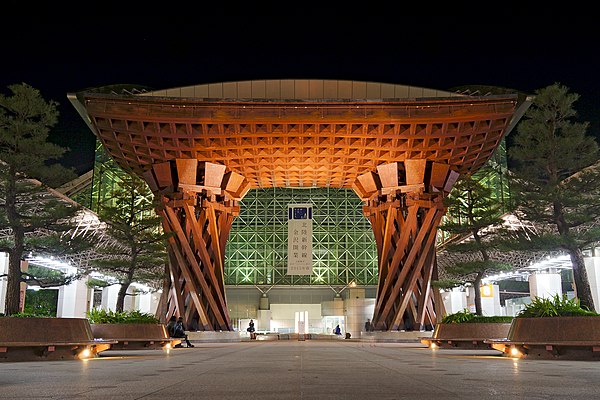
Kanazawa Station, located in Ishikawa Prefecture, is a modern architectural marvel that seamlessly blends traditional Japanese design elements with cutting-edge technology. The station's Tsuzumi-mon gate, reminiscent of a traditional hand drum, serves as an iconic entrance. The expansive wooden Tsuzumi Dome, with its lattice-patterned structure, creates a stunning play of light. Inside, the station features a vast glass canopy, providing natural illumination, and houses a wide array of shops, galleries, and eateries.
4. Antwerp Central Station - Antwerp, Belgium
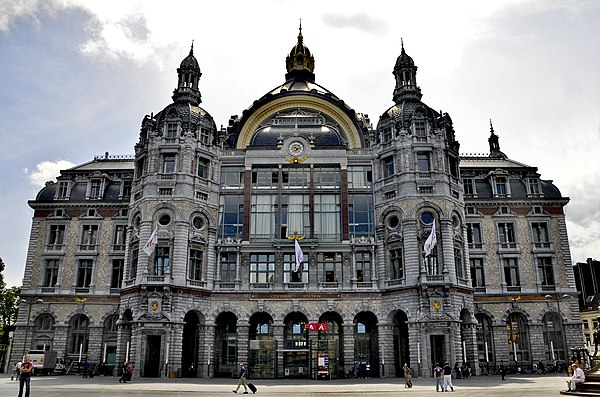
Known as the Railway Cathedral, Antwerp Central Station is a striking blend of architectural styles, including Beaux-Arts, Art Nouveau, and Neo-Baroque. Its opulent entrance hall is adorned with a monumental dome, while a lavish iron and glass vault spans the platforms. The station's monumental stone façade, adorned with sculptures, showcases its historical significance. The interior is equally impressive, with elegant marble finishes and a grand staircase leading to the upper levels.
5. Chhatrapati Shivaji Terminus - Mumbai, India
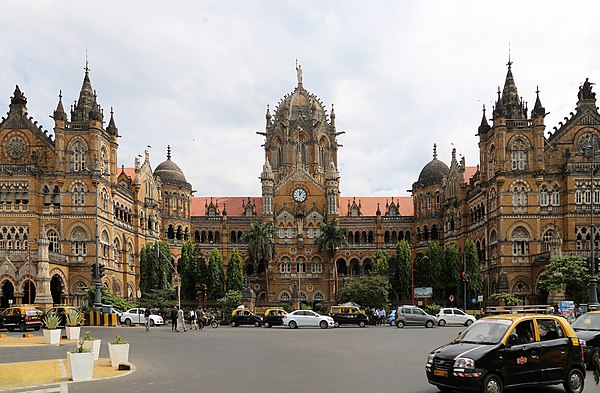
Formerly known as Victoria Terminus, this UNESCO World Heritage Site is a symbol of Mumbai's architectural heritage. Designed in the Victorian Gothic Revival style, it features pointed arches, ornate detailing, and turrets reminiscent of medieval European architecture. The main dome is a focal point, crowned with a sculpture of a woman representing Progress. The station is a bustling hub of activity, serving both long-distance and suburban train services, and stands as a testament to India's rich railway history.
6. Kuala Lumpur Railway Station - Kuala Lumpur, Malaysia
The Kuala Lumpur Railway Station is a magnificent example of Moorish and Mughal architecture, situated in Malaysia's capital city. Built in 1910, it features graceful domes, minarets, and arched windows adorned with intricate Islamic patterns. The station's distinctive horseshoe-shaped arches are a hallmark of Moorish design. The main building is covered in white stucco and displays a blend of Indian and Islamic architectural elements. It stands as a testament to Malaysia's multicultural heritage and serves as a reminder of the country's colonial past.
7. Gare du Nord - Paris, France
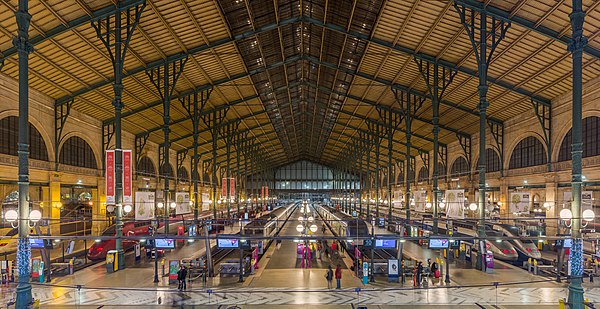
Gare du Nord is one of Paris's six major railway terminals and is the busiest station in Europe, serving as a gateway to international destinations. The station's monumental façade is characterized by its elegant neoclassical design, featuring grand columns and ornate detailing. Inside, the station boasts a spacious and bustling concourse adorned with high ceilings and a mix of modern and Belle Époque elements. Gare du Nord is not only a transportation hub but also a bustling cultural and commercial center.
8. Zurich Hauptbahnhof - Zurich, Switzerland

Zurich Hauptbahnhof, or Zurich HB, is the primary railway station in Zurich, Switzerland. Opened in 1847, it has undergone numerous expansions and renovations. The station features a grand façade with a central clock tower and a series of graceful arches. Inside, the station is a bustling hub with a multitude of shops, restaurants, and services. It's known for its efficient layout and modern amenities, reflecting Switzerland's reputation for precision and quality in engineering.
9. Milan Central Station - Milan, Italy
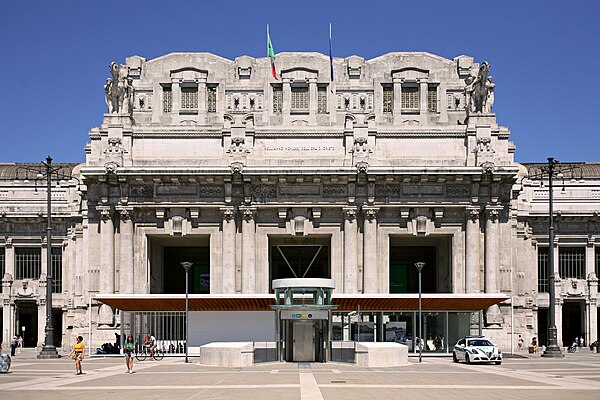
READ ALSO » Top Most Common Surnames Around The World
Milan Central Station, or Stazione Centrale, is a grand neoclassical structure located in the heart of Milan. Completed in 1931, it is characterized by its monumental arched entrance and a towering central dome adorned with sculptures and reliefs. The station's façade is embellished with intricate detailing, showcasing a blend of classical and Art Deco elements. Inside, the station's main hall is a vast space with soaring ceilings, adorned with frescoes and large windows, creating an airy and impressive atmosphere.
10. Liège-Guillemins - Liège, Belgium
Liège-Guillemins is a modern architectural masterpiece designed by Santiago Calatrava. Opened in 2009, it represents a departure from traditional railway station aesthetics. The station is characterized by its sweeping lines, a soaring vaulted glass roof, and a minimalist aesthetic. Its interior is flooded with natural light, creating a bright and open environment. Liège-Guillemins is a prime example of contemporary railway station design, focusing on functionality, aesthetics, and a harmonious integration with the surrounding urban landscape.
In conclusion, these ten railway stations stand as testament to the enduring marriage of functionality and architectural splendor. Each station's unique design reflects its cultural context, offering a glimpse into the rich history and innovative spirit of its city. From the grandeur of Grand Central Terminal to the sleek modernity of Liège-Guillemins, these stations transcend their utilitarian purpose, leaving an indelible mark on the cities they serve. As architectural marvels, they evoke a sense of wonder and admiration, showcasing the remarkable feats of engineering and design that have shaped the world's transportation landscape. These stations are not just waypoints, but living testaments to the power of human creativity and ingenuity.
